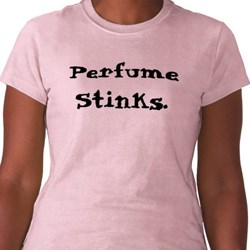NEWS RELEASE
ENVIRONMENTAL DEFENCE
**************************** Hazardous chemicals revealed in celebrity perfumes, teen body sprays
All 17 brands tested contain secret ingredients not listed on the label
TORONTO and CALIFORNIA - (May 12) - Many top-selling fragrance products - from Britney Spears' Curious and Calvin Klein Eternity, to Abercrombie & Fitch Fierce and Old Spice body spray - contain a dozen or more secret chemicals not listed on labels, multiple chemicals that can trigger allergic reactions or disrupt hormones, and many substances that have not been assessed for safety by the beauty industry's self-policing review panels, according to a study released today by Environmental Defence Canada and the Campaign for Safe Cosmetics in the United States (U.S.).
"Our weak cosmetics laws are putting Canadians' health at risk," said Dr. Rick Smith, executive director, Environmental Defence. "Yet, the fix is simple: Ottawa needs to ban all hazardous substances from use in perfumes and cosmetics. Canadians also need assurance that products are safety-tested, and that everything that goes into cosmetics is made public."
Of the 17 fragrances tested by an independent laboratory in California, four were bought in Canada and 13 were bought in the U.S.
The resulting study, Not So Sexy: The Health Risks of Secret Chemicals in Fragrance, shows that there was:
- An average of 14 secret chemicals per product: These chemicals were not listed on labels due to a loophole that allows companies to lump all fragrance ingredients under the word "parfum" or "fragrance". American Eagle Seventy Seven (bought in Canada) contained 24 hidden chemicals, the highest number of any product in the study.
- An average of 10 sensitizing chemicals: These chemicals can trigger allergic effects, such as headaches, wheezing, asthma, and contact dermatitis. Giorgio Armani Acqua Di Gio (bought in Canada) contained 19 different sensitizing chemicals, more than any other product in the study.
- A total of 12 different hormone disrupting chemicals, with an average of four in each product. Halle by Halle Berry, Quiksilver (bought in Canada) and Jennifer Lopez J. Lo Glow each contained seven different chemicals with the potential to disrupt the hormone system; six of these chemicals mimic the hormone estrogen and one is associated with thyroid effects.
The vast majority of ingredients found in these products have not been reviewed for safety by the industry's voluntary watchdogs.
Of the 91 ingredients identified in this study by lab tests or product labels, only 19 ingredients have been reviewed by the industry-funded Cosmetic Ingredient Review, and only 27 have been assessed by the International Fragrance Association (IFRA) and the Research Institute for Fragrance Materials (RIFM), which develop voluntary standards for chemicals used in fragrance.
"Fragrance chemicals are inhaled or absorbed through the skin, and many of them end up inside people's bodies, including pregnant women and newborn babies," said Jane Houlihan, senior vice president for research at Environmental Working Group (EWG).
A recent cord-blood study by EWG found Galaxolide and Tonalide - two synthetic musks associated with toxicity to the endocrine system - inside the bodies of most babies tested.
Only one product in this study did not contain one of these musks.
Twelve of the 17 products in this study also contained diethyl phthalate (DEP), a chemical found in the bodies of 97 percent of Americans that is linked to abnormal development of reproductive organs in baby boys and sperm damage in adult men.
The release of Not So Sexy kicks off Environmental Defence's new Just Beautiful campaign, aimed at making cosmetics and personal care products safer.
The Just Beautiful campaign, which will involve various rounds of product testing and reporting, coincides with the federal government's review of Canada's laws governing cosmetics.
"Unfortunately, short of sending their favourite fragrances for testing, there's no way for Canadians to be confident their products are safe," said Smith. "Our government must follow Europe in banning the worst chemicals for use in these products, and require cosmetics makers to publicly disclose what is in them. In the meantime, Canadians buying fragrances can use our study and special guide to choose safer products."
Canadians can access the report and get tips for reducing their exposure to fragrances from the guide to fragrances available on Environmental Defence's Toxic Nation web site www.toxicnation.ca.
About the campaign for safe cosmetics
The Campaign for Safe Cosmetics is a coalition of health and environmental groups established to protect the health of consumers and workers by securing the corporate, regulatory and legislative reforms necessary to eliminate dangerous chemicals from cosmetics and personal care products.
The Campaign works with more than 100 endorsing organizations, thousands of grassroots supporters and over 1,300 companies that have signed the Compact for Safe Cosmetics (www.safecosmetics.org).
About Environmental Defence
Environmental Defence protects the environment and human health.
We research solutions.
We educate.
We go to court when we have to.
All in order to ensure clean air, clean water and thriving ecosystems nationwide, and to bring a halt to Canada's contribution to climate change (www.environmentaldefence.ca).
****************************
